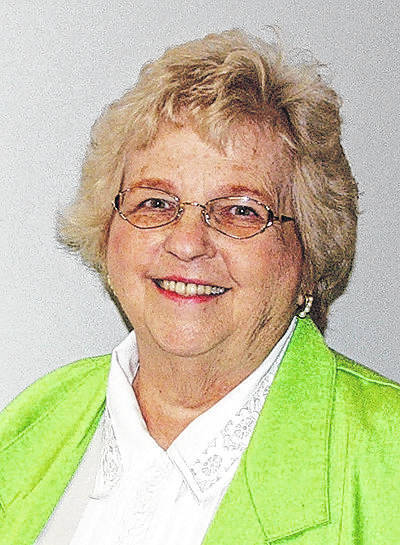
After the Civil War ended the “boys in blue” returned to their homes and businesses. Not all the men returned. Many had lost their lives during the battles and many more were unable to return to their previous positions because of serious injuries.
Fortunately the government provided pensions for the widows and those disabled, but in many cases, the children were the ones who suffered the most because families were not able to provide for them.
Influential members of the Grand Army of the Republic, organized by former Civil War soldiers, petitioned the State of Ohio to provide a home for these children. It was estimated that there might be as many as 2,000 children who would need some form of assistance. The Ohio Soldiers and Sailors Home was established in Xenia to provide for those children.
The City of Xenia deeded 1,000 acres of land for the purpose of establishing a home for the orphans. In April 1870, the state agreed to maintain such a home and that summer 350 orphans applied to live in the home.
Construction began quickly with a large frame building used as a dormitory and dining room. Additionally five cottages were constructed along with an administration building which was occupied by teachers and administrators.
Soon these structures were joined by a chapel, school building, and dining hall. Each of the buildings could accommodate up to 700 individuals at one time. A very modern hospital which included 67 beds, laboratory, X-ray, physical therapy, surgery, etc., was constructed on the grounds. A metal box, made at the home, was placed in the cornerstone at the dedication of the hospital on Aug. 10, 1928. It was recovered many years later when the building was razed. The contents of the box are maintained at the O.S.S.O. Home Museum.
As the number of students increased, so did the number of cottages, each of which could accommodate 24 children. The home was completely self-sustaining with steam heat and a water tower which provided adequate water for all buildings.
In the early years, the girls wore identical uniforms of light blue gingham with “middy blouse” tops but later clothing of choice was allowed.
All students attended school on the premises. Older children worked on the property learning a trade such as printing, telegraphy, tailoring, dressmaking, knitting, carpentry, blacksmithing, and tinning. All these skills were important for 19th century students. By the 20th century, additional skills such as farming, typing, shorthand, newspaper editing and printing, etc., were added. Upon graduation, every student of Woodrow Wilson High School was well-qualified to seek employment in the area.
Although education was a primary goal, there were also other activities for the students. They enjoyed such activities as the Drama Club, piano instruction, 4-H, Boy and Girl Scouts and rifle training.
Sporting activities played a major part in school activities. The Cadets played baseball, basketball, football, and baseball. Wrestling and track were also enjoyed. The Xenia Gazette of May 7, 1962 reported that the Xenia Wilson track team won the Mid-Miami League championship. The team defeated Lebanon by six points in a meet which had lasted from Thursday to Saturday of the previous week. Cadet Randall Boykin, a junior, won four first place medals by winning the 100 and 220 yard dashes, shot put, and running the final leg of the 880 yard relay team.
Music played an important role at the school as well.
Under the able direction of H.H. Seall, the concert band performed its concert at the home on May, 1931. At that time, there were 42 members in the orchestra accompanied by gusts musicians Juanita Rankin on the piano and Marcus Shoup with his violin. Among the musical presentations were selections from “Naughty Marietta,” and “Semper Fidelis.” Each year a Christmas program was given for the public which included the girls’ choir. Every presentation ended with the “Star Spangled Banner.”
In 1946, a highlight of the season was when the OSSO Home Cadet Band was invited to participate at the state convention of the American Legion in Columbus. The 42 band members were the guests of the Ohio Legion Forty and Eight Society and auxiliary. They were housed in The Ohio State University dormitories. The first appearance was on Aug. 11, when the convention opened, but the highlight of the visit came that evening when the band marched in the Forty-and-Eight parade in downtown Columbus. An additional event was the uniformed group contests held at Columbus Central High School Field.
Although the marching band was well received, that was not the only band at the school. The 21-piece Junior Band was also under the direction of Shumaker. In addition, an 11-piece dance band was invited to play at a dance held at Xenia Central High School, among other bookings.
The last class of Woodrow Wilson High School graduated in 1995. The Home was closed. Former pupils continue to “keep in touch” with an annual reunion.
The OSSO Home Museum is certainly worth a visit. It is located on the former campus and visitors are welcome. Call ahead for open hours.
Remembering Dr. R. David Warner
Born in Xenia, Dr. R. David Warner became an Eagle Scout and was in the Xenia High School Marching Band. Following graduation from The Ohio State University, he was in the U.S. Army during World War II. After getting his medical degree, he and wife, Mary, returned to Xenia where he spent 52 years practicing medicine. He was the principal doctor for the OSSO Home, sports physician for Xenia High School, and chief of staff at Greene Memorial Hospital, among many other honors. He loved to ski, had a pilot’s license, and was active his entire life. He always wore red socks. (Never told why).
— Joan Baxter
Joan Baxter is a Greene County historian and resident.

